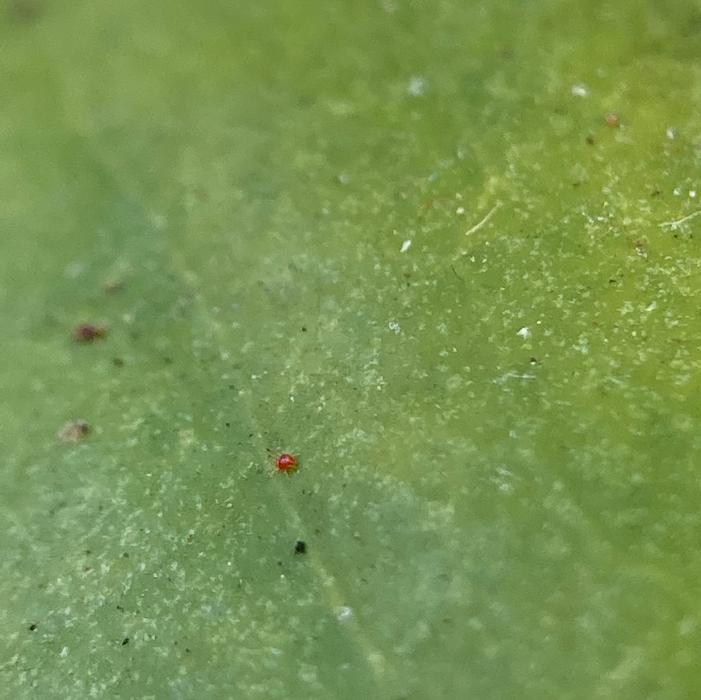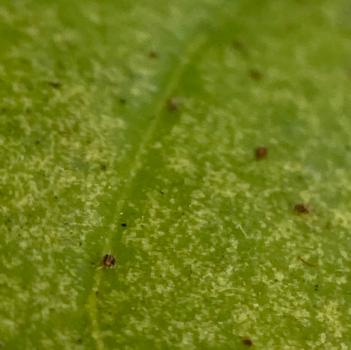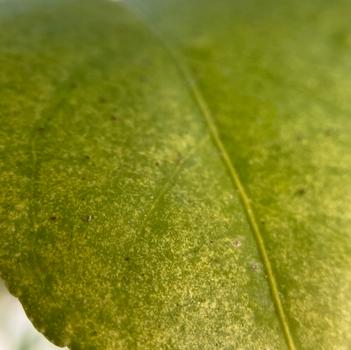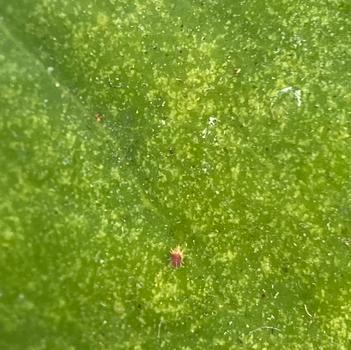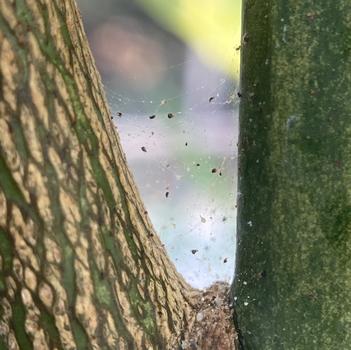General info:
Spider mites, like their name suggests, are closely related to spiders and belong in the arachnid family. The most common spider mites that a gardener will see are the red spider mite and the two-spotted spider mite. These mites feed on plants by piercing the plant tissue and sucking out the contents.
Signs/symptoms:
The presence of small webbing around the plant. Leaves, stems, and fruits have a yellow or white speckled look.
Control:
There are four main ways to deal with spider mites: preventive, biological control, manual control, and chemical control.
- Preventive: Place new plants in quarantine. This will allow time to determine if your new plant(s) have spider mites and to properly treat or dispose of before introducing it to the rest of your plant collect.
- Biological control: Predatory insects, like green lacewing, ladybird beetles (ladybugs), praying mantis, mealybug destroyer, and minute pirate bug, and predatory mites belonging to the Phytoseiulus, Amblyseius, or Metaseiuslus species, will hunt, kill, and eat spider mites and other common pests. You can attract these predatory insects and mites naturally by planting their food source as well as providing water and shelter. You can also directly purchase some of these predatory insects.
- Manual control: Manually remove and dispose of leaves, stems, and fruit that have spider mites. Or knock off the mites with a strong stream of water, usually from a garden hose.
- Chemical control: Insecticidal soap and neem oil works on mites. Follow application instructions of product.

